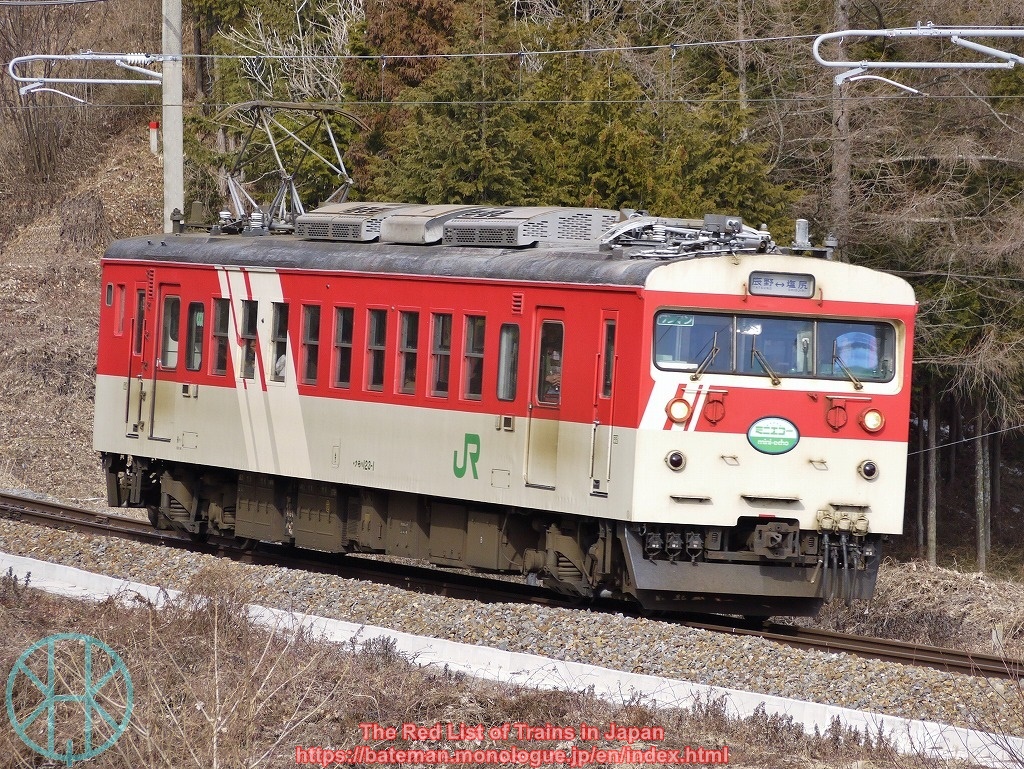JNR 123 series

Data (as of 14 Sep 2021)
| Status: | Vulnerable (JR West) |
| Extinct | |
| (JR East, JR Central) | |
| Constructed in: | 1961-63*, 1978-84 |
| Rebuilt in: | 1986-88 |
| Number rebuilt: | 13 |
| Registered: | 5 |
*Those converted from 101 series, as descried below.
History
The 123 series has complicated history despite only small number of carriage was introduced. It is a suburban EMU type that formed of one carriage, which is rare in Japan. All carriages were converted from JNR 143 or 145 series, which became redundant just before the privatisation of Japanese National Railways. Each 123 series carriages look different, and they mostly look strange due to their origins.
The first six carriages were converted from KuMoNi 143, a parcel train type of the 143 series. One of them was introduced to Chuo Main Line (Tatsuno Branch Line), three were introduced to Kabe Line, and two were introduced to Hanwa Line (Hagoromo Branch Line). JR East succeeded the first one, which retired in 2013. JR West inherited the rest of them, and they are currently used on Onoda and Ube Lines. Some of those owned by JR West were running in Okayama area in the mid to late-1990s as well.
The second five carriages were converted from KuMoYuNi 147, a parcel and mail train type of the 145 series. Those carriages date back to the early-1960s when they were initially introduced as 101 series commuter trains. Those 123 series carriages were called Fuji Pony and introduced to Minobu Line, and JR Central took them over. All five carriages were withdrawn by 2007.
The last two carriages were converted from KuMoYa 145, a shunter type of the 145 series. They were originally 101 series trains as well. Unlike other 123 series carriages, those two 123 series carriages had three sets of doors. They had been used on Minobu Line until 2007.
Current Operations & Future Prospects
Currently, JR West owns five carriages (first group) and uses them on Onoda and Ube Lines in Yamaguchi Prefecture. At peak hours, they form three coaches with 105 series commuter trains. In 2013-14, toilets were installed to all carriages.
Since both Lines are unprofitable rural lines, JR West has been reluctant to replace those old ex-parcel trains. However, they are likely to be replaced with other trains in the mid or late-2020s, possibly with diesel trains.
